#Takeo's Okusu Tree
Explore tagged Tumblr posts
Text
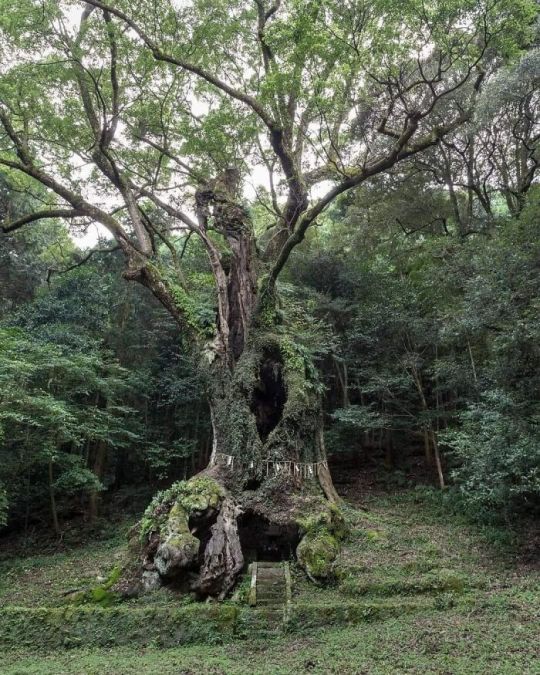
Takeo's Okusu Tree Over 3000 years old, this camphor tree is the 7th largest tree in Japan. It is 30m tall with a trunk circumference of 20m, its branches span 30m wide from east to west, and 33m wide from north to south. This is the sacred tree of Takeo Shrine, which was built in the Nara period (735 CE). The roots of the tree resemble the feet of elephants and are wrapped in rough bark, with their central section split open near the surface of the ground. Inside is a gaping cavity with an area of 12 tatami mats, which houses a stone shrine deep within.
#japan#Takeo's Okusu Tree#okusu tree#sacred tree#camphor tree#Takeo shrine#Nara period#beauty#beautiful#nature#landscape#scenery#photography
33 notes
·
View notes
Photo
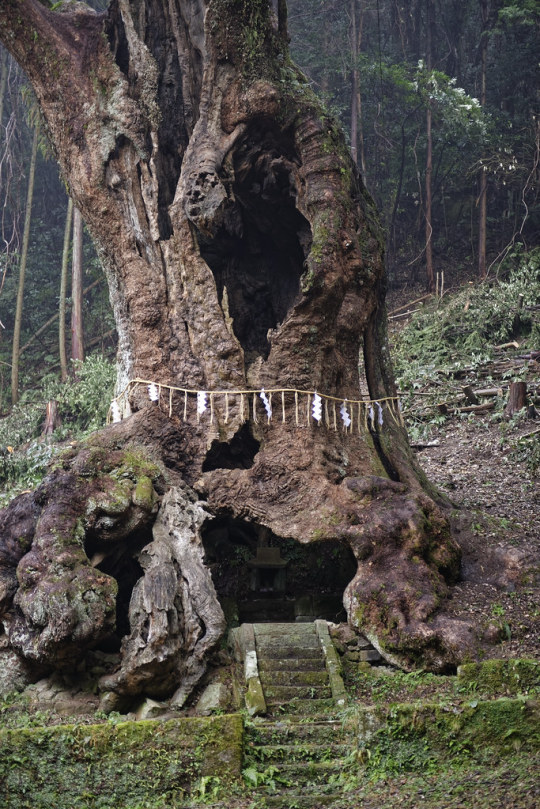
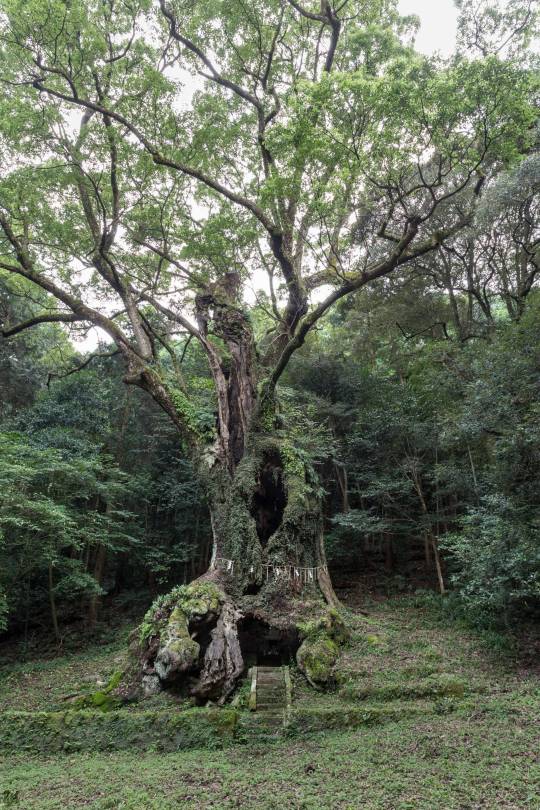
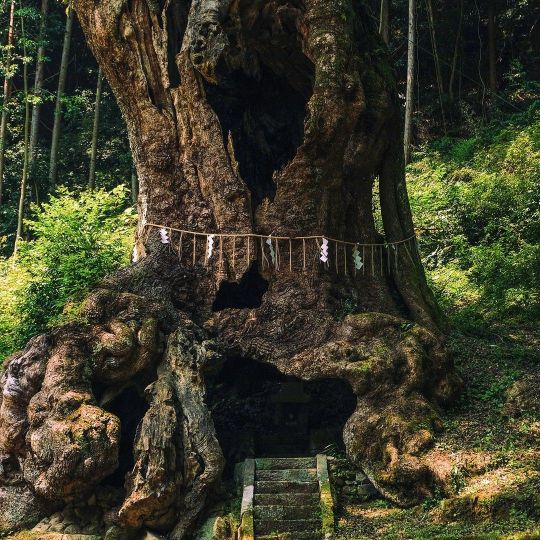
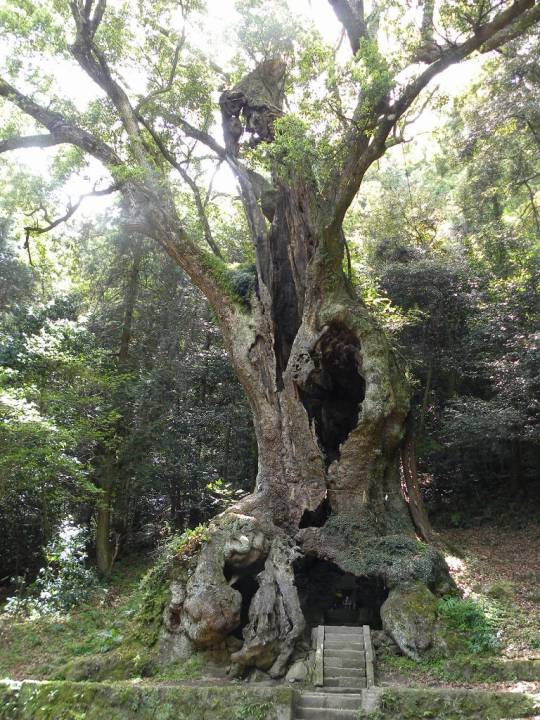
The Sacred Tree of Takeo Shrine (Takeo's Okusu Tree) Location: Outside Mifuneyama Rakuen Garden
Over 3000 years old, this camphor tree is the 7th largest tree in Japan. It is 30m tall with a trunk circumference of 20m, its branches span 30m wide from east to west, and 33m wide from north to south. This is the sacred tree of Takeo Shrine, which was built in the Nara period (735 CE). The roots of the tree resemble the feet of elephants and are wrapped in rough bark, with their central section split open near the surface of the ground. Inside is a gaping cavity with an area of 12 tatami mats, which houses a stone shrine deep within.
26K notes
·
View notes
Photo
https://www.teamlab.art/ew/takeo_okusuttree/
“Over 3000 years old, this camphor tree is the 7th largest tree in Japan. It is 30m tall with a trunk circumference of 20m, its branches span 30m wide from east to west, and 33m wide from north to south. This is the sacred tree of Takeo Shrine, which was built in the Nara period (735 CE). The roots of the tree resemble the feet of elephants and are wrapped in rough bark, with their central section split open near the surface of the ground. Inside is a gaping cavity with an area of 12 tatami mats, which houses a stone shrine deep within.
When the garden was built towards the end of the Edo period (1845 CE), efforts were made to find the path connecting the garden to the sacred tree based on the theory that one was hidden in the forest of Mifuneyama Rakuen. A footpath made from stones was finally uncovered. Currently, only the section of the path near the entrance is being maintained, and visitors can only enter near this entrance.”
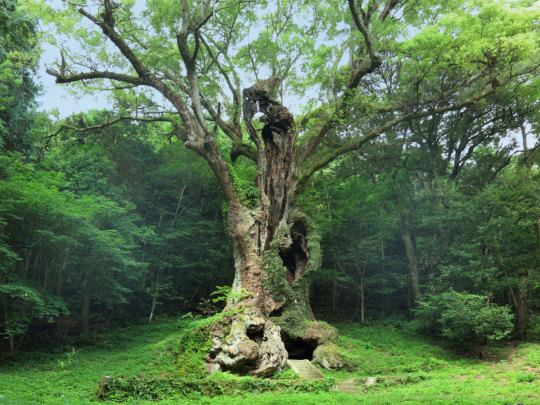
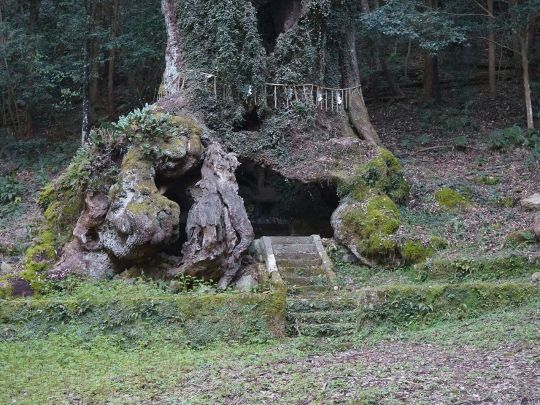
takeo no okusu
27K notes
·
View notes
Photo
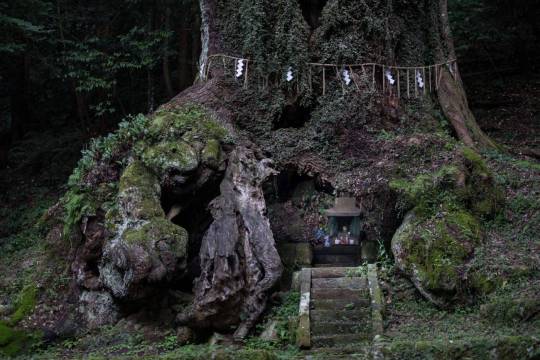
The Sacred Tree of Takeo Shrine (Takeo's Okusu Tree) Japan
3K notes
·
View notes
Text

The Sacred Tree of Takeo Shrine (Takeo’s Okusu Tree)
Location: Outside Mifuneyama Rakuen Garden
Over 3000 years old, this camphor tree is the 7th largest tree in Japan. It is 30m tall with a trunk circumference of 20m, its branches span 30m wide from east to west, and 33m wide from north to south. This is the sacred tree of Takeo Shrine, which was built in the Nara period (735 CE). The roots of the tree resemble the feet of elephants and are wrapped in rough bark, with their central section split open near the surface of the ground. Inside is a gaping cavity with an area of 12 tatami mats, which houses a stone shrine deep within.
From:
Voiceofnature
3 notes
·
View notes
Text

The Sacred Tree of Takeo Shrine (Takeo's Okusu Tree) is over 3000 years old. This camphor tree is the 7th largest tree in Japan. It is 30m tall with a trunk circumference of 20m, its branches span 30m wide from east to west, and 33m wide from north to south. Inside is a gaping cavity with an area of 12 tatami mats, which houses a stone shrine deep within.
1 note
·
View note
Photo

The Sacred Tree of Takeo Shrine (Takeo’s Okusu Tree) Location: Outside Mifuneyama Rakuen Garden. Over 3000 years old, this camphor tree is the 7th largest tree in Japan. It is 30m tall with a trunk circumference of 20m, its branches span 30m wide from east to west, and 33m wide from north to south. This is the sacred tree of Takeo Shrine, which was built in the Nara period (735 CE). The roots of the tree resemble the feet of elephants and are wrapped in rough bark, with their central section split open near the surface of the ground. Inside is a gaping cavity with an area of 12 tatami mats, which houses a stone shrine deep within.
0 notes
Text
teamLab creates outdoor digital art exhibition at Mifuneyama Rakuen Park
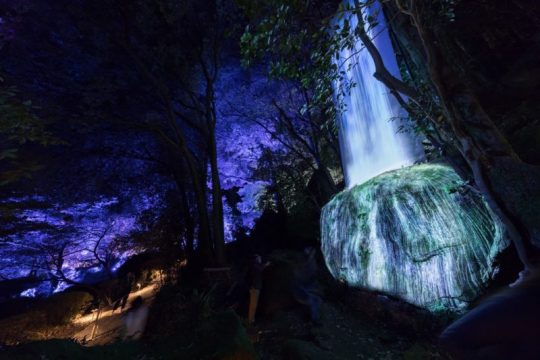
Japanese art collective teamLab has created an outdoor digital art exhibition, ‘A Forest Where Gods Live’, within the Mifuneyama Rakuen Park in Takeo, Japan.
teamLab has turned a portion of the park into a garden, using the trees of the natural forest. Located in the park is the famous, 3,000-year-old sacred Okusu tree of Takeo Shrine.
teamLab’s exhibition focuses on the ongoing relationship between nature and humans, with visitors exploring the forest, rocks, and caves of Mifuneyama Rakuen.
The boundaries between man-made garden and forest are unclear, allowing guests to feel like they exist in a continuous, borderless relationship with nature.
Explore the relationship between nature and humans
“Lost in nature, where the boundaries between man-made garden and forest are unclear, we are able to feel like we exist in a continuous, borderless relationship between nature and humans,” teamLab told Forbes.
“It is for this reason that teamLab decided to create an exhibition in this vast, labyrinthine space, so that people will become lost and immersed in the exhibition and in nature.”
teamLab hopes that visitors will get lost in the exhibition and in nature, also witnessing how nature can become art.
The concept of the teamLab project is that non-material digital technology can turn nature into art without harming it – the forest and garden can be used as they are to create artworks.
Turning nature into art without harming it
“The forest, rocks, and caves of Mifuneyama Rakuen have formed over a long time, and people in every age have sought meaning in them over the millennia,” said teamLab.
“The park that we know today sits on top of this history. It is the ongoing relationship between nature and humans that has made the border between the forest and garden ambiguous, keeping this cultural heritage beautiful and pleasing.”
The new pavilion will host teamLab: Continuity, an immersive experience featuring the digital artworks of teamLab.
‘A Forest Where Gods Live’ exhibition is open to the public from July 22 until November 8.
This content was originally published here.
0 notes
Photo
Takeo no Okusu.


27K notes
·
View notes
Photo
The Sacred Tree of Takeo Shrine (Takeo's Okusu Tree)
Location: Outside Mifuneyama Rakuen Garden Hours: On view 24 hours a day
Over 3000 years old, this camphor tree is the 7th largest tree in Japan. It is 30m tall with a trunk circumference of 20m, its branches span 30m wide from east to west, and 33m wide from north to south.
This is the sacred tree of Takeo Shrine, which was built in the Nara period (735 CE). The roots of the tree resemble the feet of elephants and are wrapped in rough bark, with their central section split open near the surface of the ground. Inside is a gaping cavity with an area of 12 tatami mats, which houses a stone shrine deep within.
When the garden was built towards the end of the Edo period (1845 CE), efforts were made to find the path connecting the garden to the sacred tree based on the theory that one was hidden in the forest of Mifuneyama Rakuen. A footpath made from stones was finally uncovered. Currently, only the section of the path near the entrance is being maintained, and visitors can only enter near this entrance.



takeo no okusu
#takeo shrine#takeo's Okuso tree#camphor tree#japan#Mifuneyama Rakuen Garden#edo period#ancient tree#amazing
27K notes
·
View notes